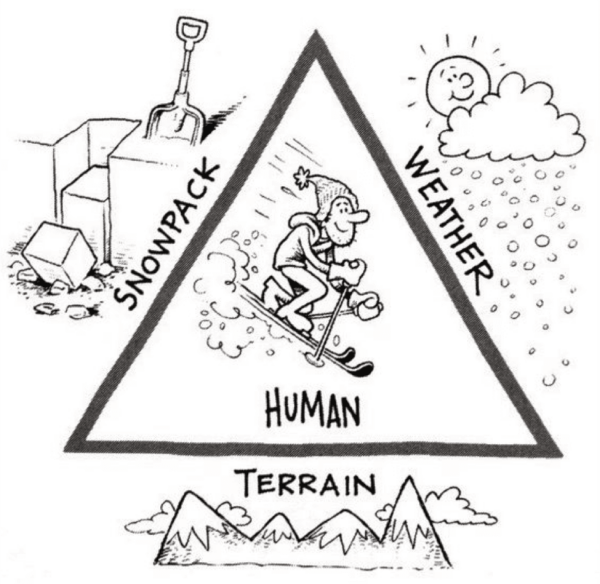Cognitive biases or heuristic traps that can prevent sound decision making.
 “Human factors” is a term originally coined in the context of avalanche accidents by Doug Fesler and Jill Fredston. It is in the middle of their “avalanche triangle”, which includes terrain, weather, and snowpack on the three sides of the triangle. Human factors refer to cognitive or heuristic traps and biases that can lead to poor decision making in the backcountry. Fesler and Fredston commonly observed the following human factors in avalanche accidents they investigated: attitude, ego, poor planning, denial, tunnel vision, overconfidence, peer pressure, poor communication, indecision, haste, complacency, summit fever, money considerations, laziness, fatigue, and inattention.
“Human factors” is a term originally coined in the context of avalanche accidents by Doug Fesler and Jill Fredston. It is in the middle of their “avalanche triangle”, which includes terrain, weather, and snowpack on the three sides of the triangle. Human factors refer to cognitive or heuristic traps and biases that can lead to poor decision making in the backcountry. Fesler and Fredston commonly observed the following human factors in avalanche accidents they investigated: attitude, ego, poor planning, denial, tunnel vision, overconfidence, peer pressure, poor communication, indecision, haste, complacency, summit fever, money considerations, laziness, fatigue, and inattention.
We are all subject to systematic errors in our thought processes, in part because our brains rely on shortcuts to process immense amounts of information and make decisions efficiently throughout our daily lives. Unfortunately, cognitive shortcuts and biases can also cause us to overlook clear signs of danger or make irrational decisions for the given avalanche conditions; thus many avalanche accidents are rooted in some kind of human factor. Below, we describe some of the more common cognitive traps and biases, using our friend Gerry to give avalanche-related examples.